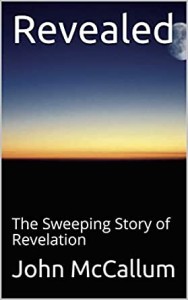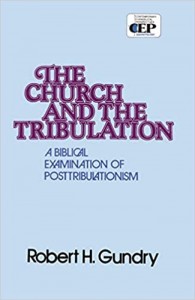
Revelation 2
18 “And to the angel of the church in Thyatira write: ‘The words of the Son of God, who has eyes like a flame of fire, and whose feet are like burnished bronze. 19 “‘I know your works, your love and faith and service and patient endurance, and that your latter works exceed the first. 20 But I have this against you, that you tolerate that woman Jezebel, who calls herself a prophetess and is teaching and seducing my servants to practice sexual immorality and to eat food sacrificed to idols. 21 I gave her time to repent, but she refuses to repent of her sexual immorality. 22 Behold, I will throw her onto a sickbed, and those who commit adultery with her I will throw into great tribulation, unless they repent of her works, 23 and I will strike her children dead. And all the churches will know that I am he who searches mind and heart, and I will give to each of you according to your works. 24 But to the rest of you in Thyatira, who do not hold this teaching, who have not learned what some call the deep things of Satan, to you I say, I do not lay on you any other burden. 25 Only hold fast what you have until I come. 26 The one who conquers and who keeps my works until the end, to him I will give authority over the nations, 27 and he will rule them with a rod of iron, as when earthen pots are broken in pieces, even as I myself have received authority from my Father. 28 And I will give him the morning star. 29 He who has an ear, let him hear what the Spirit says to the churches.’
A bad reputation is a hard thing to shake and a bad reputation unfairly created through false accusation is a cruel thing indeed. But sometimes, every now and then, bad reputations are earned. One example of a justly-deserved bad reputation involves a woman who appears in the Old Testament and then is named again in Revelation. I am talking about Jezebel.
The word “Jezebel,” when applied to someone, is usually not a compliment. Jezebel’s bad reputation continues on into our day. To get at the general sentiment concerning her we might consider the 1951 Frankie Lane hit song “Jezebel,” which goes like this:
Jezebel, Jezebel
If ever the devil was born without a pair of horns
It was you, Jezebel, it was you
If ever an angel fell, Jezebel, it was you
Jezebel, it was you
If ever a pair of eyes promised paradise
Deceiving me, grieving me, leavin’ me blue
Jezebel, it was you
If ever the devil’s plan was made to torment man
It was you, Jezebel, it was you
Could be better that I never know a lover such as you
Forsaking dreams and all for the siren call of your arms
Like a demon, love possessed me, you obsessed me constantly
What evil star is mine, that my fate’s design should be Jezebel?
If ever a pair of eyes promised paradise
Deceiving me, grieving me, leavin’ me blue
Jezebel, it was you
If ever the devil’s plan was made to torment man
It was you, Jezebel, it was you, night and day, every way
Jezebel, Jezebel, Jezebel![1]
Well! That is harsh! But I am going to argue that in this case it is fair and accurate. But who was Jezebel and why was/is she so loathed? Jezebel, we are told in 1 Kings 16:31, was “the daughter of Ethbaal king of the Sidonians.” In 1 Kings 16:29-34 we read:
29 In the thirty-eighth year of Asa king of Judah, Ahab the son of Omri began to reign over Israel, and Ahab the son of Omri reigned over Israel in Samaria twenty-two years. 30 And Ahab the son of Omri did evil in the sight of the Lord, more than all who were before him. 31 And as if it had been a light thing for him to walk in the sins of Jeroboam the son of Nebat, he took for his wife Jezebel the daughter of Ethbaal king of the Sidonians, and went and served Baal and worshiped him. 32 He erected an altar for Baal in the house of Baal, which he built in Samaria. 33 And Ahab made an Asherah. Ahab did more to provoke the Lord, the God of Israel, to anger than all the kings of Israel who were before him. 34 In his days Hiel of Bethel built Jericho. He laid its foundation at the cost of Abiram his firstborn, and set up its gates at the cost of his youngest son Segub, according to the word of the Lord, which he spoke by Joshua the son of Nun.
So Jezebel was a pagan princess who married a King of Israel and brought her idolatry into the nation. Furthermore, in 1 Kings 18:4 we read that “Jezebel cut off the prophets of the Lord” and that Obadiah had to hide one hundred prophets in caves from her. Furthermore, Elijah the prophet had to flee the murderous wrath of Jezebel after he defeated the prophets of Baal on Mt. Carmel (1 Kings 19). In the end, Jezebel’s demise was as brutal and disturbing as her life. We read of it in 2 Kings 9.
30 When Jehu came to Jezreel, Jezebel heard of it. And she painted her eyes and adorned her head and looked out of the window. 31 And as Jehu entered the gate, she said, “Is it peace, you Zimri, murderer of your master?” 32 And he lifted up his face to the window and said, “Who is on my side? Who?” Two or three eunuchs looked out at him. 33 He said, “Throw her down.” So they threw her down. And some of her blood spattered on the wall and on the horses, and they trampled on her. 34 Then he went in and ate and drank. And he said, “See now to this cursed woman and bury her, for she is a king’s daughter.” 35 But when they went to bury her, they found no more of her than the skull and the feet and the palms of her hands. 36 When they came back and told him, he said, “This is the word of the Lord, which he spoke by his servant Elijah the Tishbite: ‘In the territory of Jezreel the dogs shall eat the flesh of Jezebel, 37 and the corpse of Jezebel shall be as dung on the face of the field in the territory of Jezreel, so that no one can say, This is Jezebel.’”
My goodness! Then, amazingly, after all of this and after all of the years that pass, we find her here in our text, in the church of Thyatira in Revelation 2!
20 But I have this against you, that you tolerate that woman Jezebel, who calls herself a prophetess and is teaching and seducing my servants to practice sexual immorality and to eat food sacrificed to idols.
But how can this be? How can dead Jezebel be in the New Testament church of Thyatira in Asia Minor at the end of the first century? It is because the name “Jezebel” represents a type and that type had become a member of Thyatira. I believe there actually was a literal woman in the church of Thyatira and that she was so like Jezebel of old that Jesus used her name as a warning to the church. Let us unpack what it means that Jesus warned the church about Jezebel in her midst.


 Much like he did in his earlier work,
Much like he did in his earlier work,  Robert H. Gundry
Robert H. Gundry